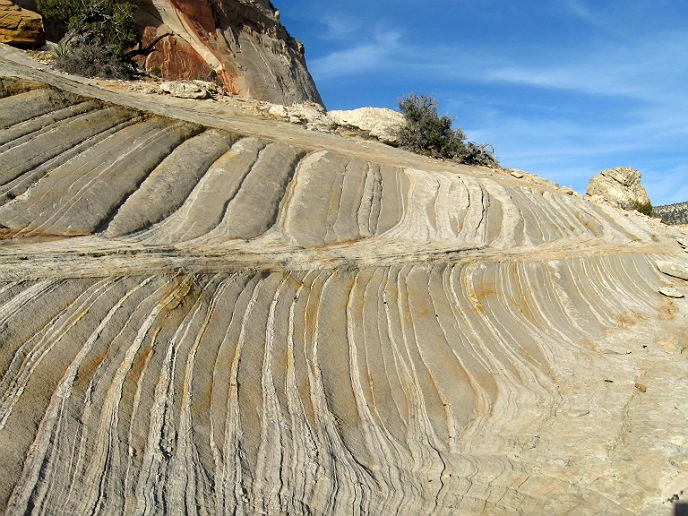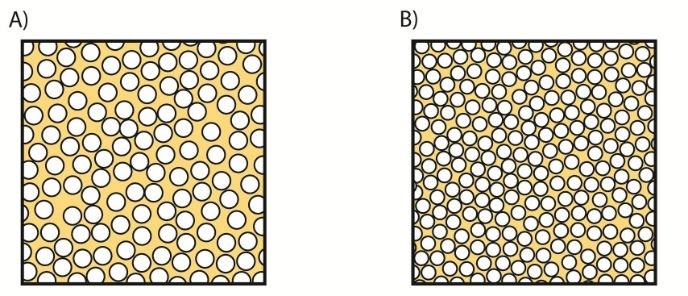
NPS photo/Adrienne Fitzgerald
How big were the Navajo desert sand dunes? How did they become sandstone?
The ancient sand dunes were similar to dunes in modern deserts, probably reaching several hundred feet at their greatest height. Only the bottom portion of a dune is preserved in the sandstone, but layer upon layer of dunes built up, until the total thickness of the pile of sand grew to be over 2,000 feet thick (although most of this thickness would have been underground).

Diagram by Geoscientist-In-the Park David Tarailo, sponsored by the Geological Society of America, GeoCorps Program, 2012.
The sand was eventually turned into sandstone due to the pressure from overlying layers, combined with the cementing effects of mineral-laden groundwater. Groundwater containing dissolved minerals –particularly calcium carbonate –percolated through and around the sand grains below the water table, leaving behind calcium carbonate that glued the grains together—turning sand dunes into the Navajo Sandstone.

Diagram by Geoscientist-In-the Park David Tarailo, sponsored by the Geological Society of America, GeoCorps Program, 2012. Return to the Navajo Sandstone Return to the main Rock Layers page |
Last updated: June 13, 2015
